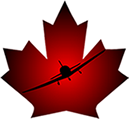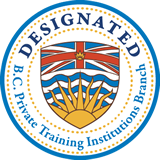 |
|
Tail Draggers“I fly because it releases my mind from the tyranny of petty things.” Antoine de Saint-Exupery For many years, the thought of learning to fly on an airplane with its third wheel located at the back has been discounted in mainstream aviation training. The infamous “taildragger” or conventional gear aircraft has come to represent a throw-back to times past and gone. They’re too hard to fly; you’ll ground loop; you’ll end up upside down and backward. “Modern” aircraft are configured with the tricycle gear, third wheel in the front configuration: what the Cessna Aircraft Corporation referred to as, “Land-O-Matic” landing gear when they introduced the C-150 trainer. In the last few years, however, more and more people have re-visited the idea of learning to fly on a tail wheel aircraft and a number of flight schools across Canada and in the United States have begun to offer basic, advanced and transition instruction on these interesting and delightful machines. There was a time, not too far in the past, when every aspiring pilot learned to fly on a conventional gear aircraft as a matter of course. Small, training aircraft were built that way, and even larger aircraft, including passenger and transport aircraft, were so configured. Hence the term, “conventional gear”. Since the 1950’s we have come to consider the tricycle gear and the “normal” configuration for an aircraft and have almost ceased to give the topic further consideration. There is, however, a good argument for the continued use of conventional gear aircraft for basic training and it is worth considering it as a serious option when making decisions at the beginning of a flying career or along the way as an added capability and skill set. The argument goes something like this: training on a taildragger makes you a better pilot. Now, that is a broad statement and could probably use some level of shading if it to carry any serious weight, but there is some truth in it. The key difference between the conventional gear or taildragger aircraft and modern tricycle gear aircraft is the location of the centre of gravity in relation to the location of the main landing gear wheels. In a tricycle gear aircraft the centre of gravity is located ahead of the main gear; in a conventional gear aircraft the centre of gravity is located aft of the main gear. Why is this so important a difference? Simply put, the centre of gravity of an object—its centre of mass—has a positive tendency to lead, to move to the front of the machine’s direction of travel. That’s why an arrow arrives at its target head first, why a weighted stick will always arrive back on the surface of the planet weighted end down or why we install mass balance weights in the leading edge of rudders, elevators and ailerons. With a tricycle gear aircraft, as it taxies down the runway, touches down on landing or lifts itself into the air, the centre of gravity assists the aircraft to track straight. This simplifies the pilot’s efforts to achieve simple and easy manoeuvring. It also allows a lower level of perfection in use of the rudder, elevator and aileron controls. The aircraft does more of the work and allows the pilot to achieve safe ground handling and flight with a lower level of skill. If the pilot gets a bit sloppy on his or her controls, the aircraft will, most of the time, bail itself out of the potential mess. Certainly, this is a very strong argument in favour of the tricycle gear configuration and one not to be depreciated in any way. It’s one of the significant reasons why tricycle gear aircraft have dominated the aviation scene and will continue to do so unless or until some bright soul comes up with a better idea. Taildraggers, on the other hand, require a higher level of skill to achieve safe ground handling, take-offs and landings. And herein lays the argument for the use of conventional gear aircraft in training. The pilot must develop a higher skill level in aircraft control to achieve safe ground handling and flight. He or she must become very proficient in fine control. The consequences of lack of skill are immediate, embarrassing and sometimes worse. The bottom line is that no ground manoeuvre, take-off or landing with a conventional gear aircraft can be taken for granted. The machine is “in flight” from the moment you cast off the tie-down ropes until you have them, once again, firmly tied at the end of the flight. You, as pilot, must be in control. Rather than help you out, the machine has a built-in tendency to end up backwards given any opportunity. So, why in the world would a person consider taking flight training on a conventional gear aircraft? Simply this: you will develop those critical aircraft handling skills—use of rudder, aileron and elevator to a high level of proficiency. You will, as a pilot, have learned and earned a high level of confidence in your abilities to handle an aircraft as a product of your training and experience. You will emerge from your training more skilled, more focused and better qualified as a stick and rudder airplane driver. Besides, it just about the most fun you can have and still keep your pants on.
|


